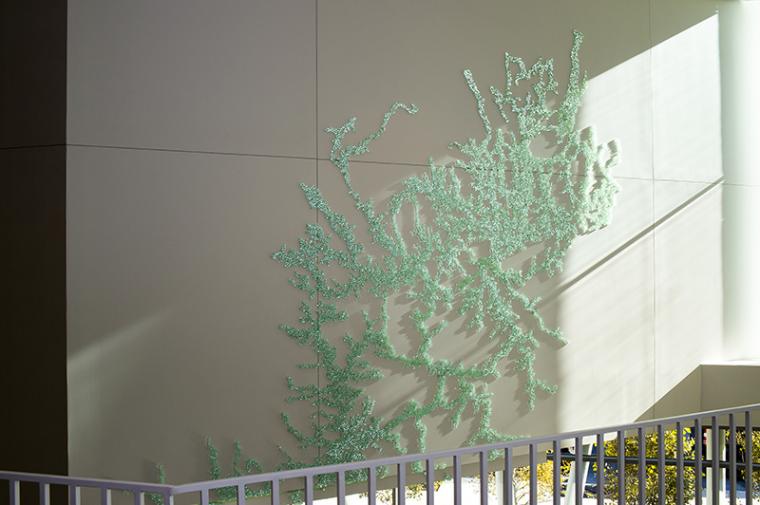Oberlin Illuminate Surpasses Goal
October 11, 2016
Communications Staff

The goal was ambitious and unprecedented for an Oberlin fundraising campaign: to raise $250 million over seven years. Yet 18 months ahead of schedule, in December 2014, the campaign had met its goal. And by the official close of the campaign in June 2016, Oberlin Illuminate had raised well over $317 million.
“I’m thrilled with the results,” says President Marvin Krislov. “We vastly exceeded our goals. And what I’m really gratified by is the number of people who participated in the process and that a lot of people gave at a very generous level. That says a lot about them and their commitment to Oberlin.”
Oberlin Illuminate was launched to the public in 2012 following a quiet groundwork-laying phase that aimed to broaden access to an Oberlin education, strengthen the campus community, enrich the academic program, make Oberlin more competitive, and better position students for success after they graduate. Specific campaign priorities included boosting financial aid dollars and annual giving, broadening faculty support and curricular innovation, revitalizing health and wellness programs, supporting the Green Arts District, and completing construction of the Bertram and Judith Kohl Building for jazz studies. Krislov says that, though the campaign’s goal was met, the college will continue to raise money, particularly for student financial aid.
“This campaign was about strengthening the institutional culture of philanthropy, and I think we were very successful in accomplishing that,” says Bill Barlow, Oberlin’s vice president for development and alumni affairs. “The Annual Fund grew by one-third over the past seven years; giving from non-alumni parents and families nearly doubled; faculty and staff contributed $5.6 million; and hundreds of bequest expectancies and planned gifts were added to our books with a face value of $84.8 million. Our major gifts effort resulted in more than 500 individual and institutional donors making commitments of $50,000 to $1 million, and 71 donors made gifts of $1 million or more. Because of this campaign, our yearly average fundraising revenue grew from $22 million in 2008 to more than $40 million in 2016—that’s an increase of 83 percent.”
Financial aid was the campaign’s top priority and it was where Board of Trustees Chair Clyde McGregor ’74 directed much of his giving.
“I believe that keeping Oberlin accessible for students from every socioeconomic level is vitally important,” McGregor says. “This helps level the playing field and allows these students to pursue the issues and subjects that matter most to them.”
Krislov says that Oberlin’s educational model is expensive, but worth it. “It’s hard to imagine a more transformative way of supporting students in their educational and cocurricular endeavors,” he says.
Mia and David Hartley, the parents of an Oberlin student, agree. “We are big proponents of a liberal arts education,” Mia says. “We think it’s very important that the classes are small and are taught by engaged and accessible professors. We also think it’s important that the college offer the services that help students attain that liberal arts education: whether it’s resources for mental and physical well-being, academic support, opportunities for research and study abroad, support for clubs and student organizations, extracurricular activities, etc. We know these things do not come free, and since we are able, we want to help the college when it comes to funding them.”
Oberlin Trustee Pat Shanks ’63, who served as a campaign cochair, says that remembering her own experience at Oberlin was her inspiration for participating in Oberlin Illuminate.
“I met my husband, Merrill ’61, at Oberlin. This place changed our lives,” she says. “We wanted to do more to help future students have the same opportunities we did by ensuring that Oberlin has the resources, tools, and facilities it needs to compete with other top-tier institutions. Our current emphasis is on creating new opportunities for expanded health and wellness activities, which helps Oberlin attract outstanding students and contributes to the well-being of the entire college community.”
Like the Shanks, Oberlin trustee and campaign cochair Chesley Maddox-Dorsey ’81 was also motivated by her own Oberlin experience to become involved in the campaign.
“What I learned at Oberlin built on the values I was taught in my own family: the power of curiosity, the purpose of hard work, and the intrinsic benefits of extending a helping hand to those in need,” Maddox-Dorsey says. “Oberlin has always had a mission of providing the very best education, and my husband, Leon ’81, and I are proud to support that vision of a future that benefits all of us. The critical thinking skills gained at Oberlin are of immeasurable value to our students and our world.”
Krislov agrees. “We need to continue to talk about how important Oberlin is to us as individuals who have a connection to the institution, but we also need to talk about Oberlin’s impact on the world. The fact that so many people did give and gave generously of their time and money during this campaign meant the world to us, not only for Oberlin now, but also for the future.”
You may also like…
Josh Nolan Named Vice President, General Counsel, and Secretary at Oberlin
Distinguished attorney brings extensive experience in higher education law.
Learning by Teaching: Oberlin Students Share Global Music with Young Learners
College and Conservatory students in PACE 103 prepare local children for an immersive community concert at Oberlin.
Nuiko Wadden ’02 Joins Oberlin Conservatory Faculty as Assistant Professor of Harp
The versatile musician brings extensive opera, orchestral, and contemporary music experience to her role


